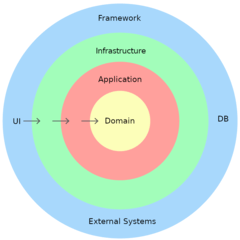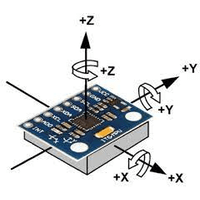Communication protocols: UART, I2C and SPI
Digital communication between devices is an essential part of modern technology. There are several protocols available for this purpose, each with their own strengths and weaknesses. Three of the most commonly used protocols are UART, I2C, and SPI. In this article, we will examine these three protocols, their advantages and disadvantages, and how they compare to each other.
UART Communication
UART stands for Universal Asynchronous Receiver/Transmitter. It is a simple, but widely used communication protocol that is used to transfer serial data between two devices. The communication is usually done using two lines - a transmit line (TX) and a receive line (RX). When one device wants to send data to the other, it transmits a series of bits over the TX line. The receiving device then receives these bits over the RX line.

UART is an asynchronous protocol, which means that there is no clock signal involved in the communication. Instead, the transmitting and receiving devices use their own clocks to synchronize the data transfer. This makes the protocol simple and efficient, but it also means that there is a risk of data corruption if the clocks are not synchronized properly.
Pros of UART:
Simple Implementation: One of the biggest advantages of UART is its simplicity. The protocol is straightforward and easy to implement, making it ideal for basic communication needs.
Wide Availability: UART is supported by a wide range of microcontrollers and other devices, making it a popular choice for communication between different devices.
Low Overhead: Because UART uses a simple protocol, there is very little overhead involved in the communication. This means that it is fast and efficient, making it a good choice for applications where speed is important.
Cons of UART:
Limited Distance: UART communication is typically limited to short distances, usually a few meters at most. This is because the signal strength decreases over long distances, and it is susceptible to interference.
Limited Functionality: UART is a simple protocol and is not suitable for complex applications that require more advanced features.
No Addressing: UART does not provide any addressing or error detection capabilities. This means that it is not suitable for applications that require reliable communication between multiple devices.
I2C Communication
I2C stands for Inter-Integrated Circuit. It is a communication protocol developed by Philips in the 1980s and is used to transfer data between devices over short distances. I2C is a more complex protocol than UART, but it provides more advanced features. It uses a simple two-wire interface, consisting of a data line (SDA) and a clock line (SCL).

In I2C communication, one device is the master, and the other is the slave. The master device initiates the communication by sending a start signal on the SDA line. It then sends a series of bits over the SDA line to the slave device, along with clock pulses on the SCL line to synchronize the transfer. The slave device then sends a response back to the master over the SDA line, and the master device sends clock pulses on the SCL line to acknowledge the response. Finally, the master device sends a stop signal on the SDA line to end the communication.
I2C also includes addressing and error detection capabilities. Each device on the I2C bus has a unique address, which the master device uses to communicate with the slave devices. The protocol also includes error detection and correction, which helps to ensure reliable communication between devices.
Pros of I2C:
Addressing: I2C supports multiple devices on the same bus, and each device has a unique address. This makes it suitable for applications that require communication between multiple devices.
Error Detection: I2C includes error detection capabilities, which means that it can detect and correct errors that may occur during communication.
Extensible: I2C is an extensible protocol, which means that it can be expanded to include additional features as needed.
Cons of I2C:
Limited Speed: I2C communication is relatively slow, with a maximum speed of around 400 Kbps. This makes it unsuitable for applications that require high-speed communication.
Limited Distance: I2C is also limited in terms of distance, with a maximum distance of around 1 meter. This is because the signal strength decreases over long distances, and it is susceptible to interference.
Complexity: I2C is a more complex protocol than UART, and it requires more resources to implement. This makes it more challenging to use in applications that have limited resources.
SPI Communication
Serial Peripheral Interface (SPI) is a full-duplex synchronous communication protocol commonly used for short-distance communication between microcontrollers, sensors, and other digital devices. The SPI protocol uses a master-slave architecture, where a master device controls the clock and initiates communication, and one or more slave devices respond to commands from the master.

The SPI protocol consists of four signals: the master-out-slave-in (MOSI) line, which transmits data from the master to the slave; the master-in-slave-out (MISO) line, which transmits data from the slave to the master; the serial clock (SCLK) line, which provides a clock signal to synchronize the communication; and the slave select (SS) line, which selects the slave device with which the master wants to communicate.
Pros of SPI:
High Data Rate: SPI is a fast protocol, with data rates ranging from a few kilobits per second to several megabits per second, depending on the clock frequency and the number of data bits per transaction. This makes SPI suitable for applications that require high-speed data transfer, such as audio and video streaming, and real-time data acquisition.
Simple and Efficient: SPI is a relatively simple protocol with a small protocol overhead, making it efficient in terms of power consumption and processing time. The SPI protocol is easy to implement in hardware and software, and requires only a few lines of code to send and receive data. This makes SPI suitable for low-power and low-cost applications, such as battery-powered devices and embedded systems.
Versatile: SPI is a versatile protocol that can be used to communicate with a wide range of digital devices, including microcontrollers, sensors, memory chips, and display modules. SPI is also compatible with other protocols, such as I2C and UART, allowing for easy integration with existing systems and devices.
Cons of SPI:
Limited Distance: SPI is a short-distance protocol, with a maximum distance of a few meters, depending on the data rate and the quality of the transmission line. This makes SPI unsuitable for applications that require long-distance communication, such as telecommunications and networking.
No Built-in Error Detection: SPI does not have built-in error detection or correction mechanisms, making it susceptible to errors caused by noise, interference, and other factors. This can result in data corruption and loss, especially in noisy environments.
Limited Multi-Device Support: SPI is a master-slave protocol, which means that only one master device can communicate with multiple slave devices. This limits the scalability and flexibility of the SPI protocol, as adding more devices to the network requires additional hardware and software resources, and can result in longer response times and increased complexity.
Comparison
When deciding which protocol to use for a specific application, several factors must be considered, including data rate, distance, reliability, and power consumption. Here is a comparison of UART, I2C, and SPI based on these factors:
UART | I2C | SPI | |
|---|---|---|---|
Communication Method | Asynchronous (no clock signal) | Synchronous (with clock signal) | Synchronous (with clock signal) |
Number of Lines | 2 (TX, RX) | 2 (SDA, SCL) | 4 (MOSI, MISO, SCLK, SS) |
Topology | Point-to-Point | Multi-Master, Multi-Slave | Master-Slave |
Data Transfer Rate | Up to several Mbps | Up to 3.4 Mbps (high-speed mode) | Up to several Mbps |
Distance | Up to several meters | Up to 1 meter (standard mode) | Up to several meters |
Error Detection | None | Yes (using checksum or CRC) | None |
Multi-Device Support | Not natively supported | Yes (up to 127 devices) | Yes (up to several devices) |
Power Consumption | Low | Low to Moderate | Low to Moderate |
As shown in the table above, each protocol has its own strengths and weaknesses that make it suitable for different applications. Understanding the differences between the protocols is important for selecting the appropriate communication protocol for a particular application.
Conclusion
We reviewed three commonly used digital communication protocols, each with its own advantages and disadvantages. UART is a simple and fast protocol suitable for point-to-point communication, I2C is reliable and suitable for short-distance communication between multiple devices, and SPI is suitable for high-speed data transfer over short distances. The choice of protocol depends on the specific requirements of the application, including data rate, distance, reliability, and power consumption. Understanding the strengths and weaknesses of each protocol is crucial for making an informed decision when selecting a communication protocol for a particular project or device.




0 Comments